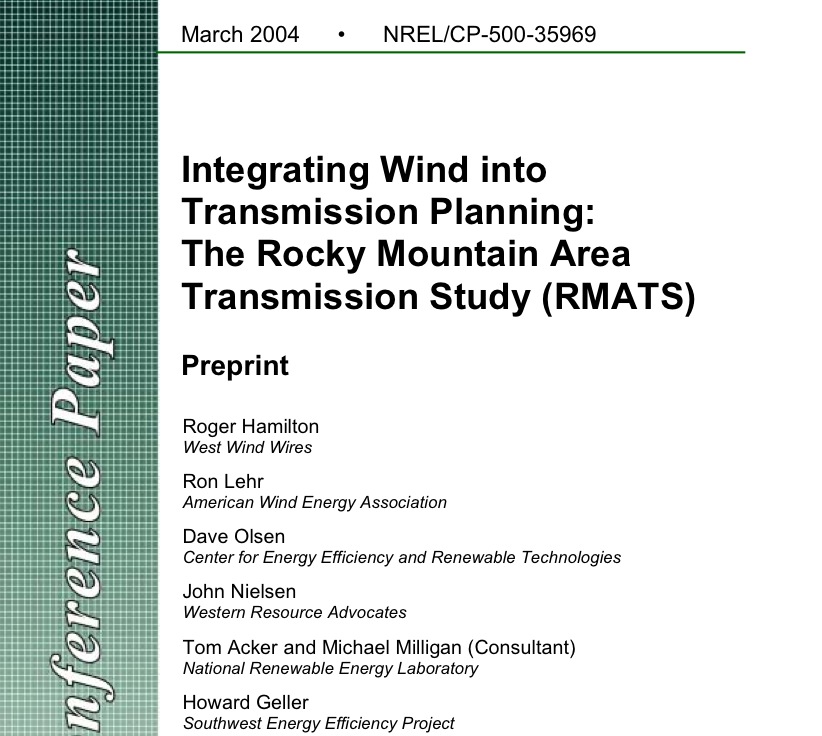Hamilton, Roger, Ron Lehr, David Olsen et. al. 2004. “Integrating Wind into Transmission Planning: The Rocky Mountain Area Transmission Study.” Golden, CO: National Renewable Energy Laboratory.
Abstract
Plans to expand the western grid are now underway. Bringing power from low-cost remote resources—including wind—to load centers could reduce costs for all consumers. But many paths appear to be already congested. Locational marginal price-based modeling is designed to identify the most cost-effective paths to be upgraded. The ranking of such paths is intended as the start of a process of political and regulatory approvals that are expected to result in the eventual construction of new and upgraded lines.
This paper reviews the necessary data and analytical tasks to accurately represent wind in such modeling, and addresses some policy and regulatory issues that can help with wind integration into the grid. Providing wind fair access to the grid also (and more immediately) depends on tariff and regulatory changes. Expansion of the Rocky Mountain Area Transmission Study (RMATS) study scope to address operational issues supports the development of transmission solutions that enable wind to connect and deliver power in the next few years—much sooner than upgrades can be completed.
Taken together, the economic modeling and tariff investigation of the RMATS study provide an unprecedented opportunity for utility planners, regulators, and state officials to consider the integration of gigawatt-scale additions of wind power into the Western Interconnection. In doing so, it sets important precedents for treating wind in transmission studies in other regions.


Comments are closed